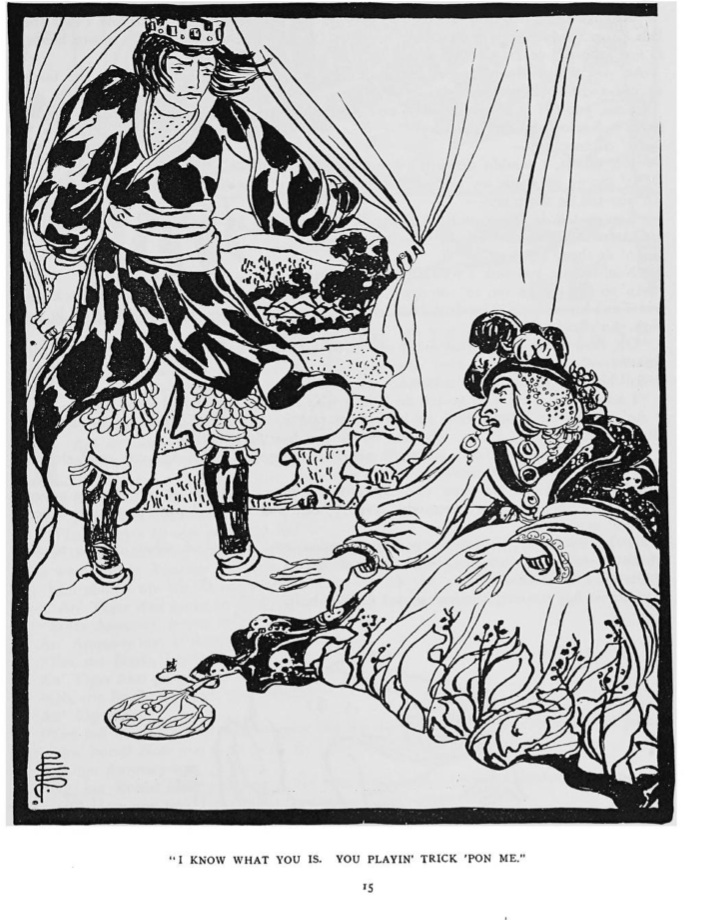Pamela Colman Smith’s Annancy Stories (1899) features the first known published illustrations of Anansi, also known as Annancy, the witty and cunning traditional African folktale character who is represented as a spider in human form. Annancy’s roots in Jamaica are closely linked to the 16th-century Atlantic slave trade during which African slaves were transported to Jamaica under the British imperial rule.
Smith’s Annancy Stories is uniquely Jamaican: the narrative text written is in a Jamaican patois, the illustrations are bold, distinctly non-Victorian, non-British, and represent themes of West Indian and African folklore, and finally, the collective work recounts the expressions and practices of Jamaican culture. One notable cultural practice that is continually referenced throughout Annancy Stories is ‘obeah,’ a magical and religious custom popular to the West Indies that was outlawed in Jamaica during the British rule.
The oral tradition of Annancy stories, passed down by African slaves in living in Jamaica, served as a form of self-expression, retaliation to suppression, yearning for freedom, and cultural preservation even after the 1838 emancipation of all slaves in British colonies. Smith makes this evident in her illustration “I know what you is. You playin’ trick pon’ me.”
In the foreground, the very distinct depiction of ‘obeah,’ wearing a cloak decorated with what seem to be spiders, octopi, or skulls and bones, can be understood as a statement of cultural pride and also a critique on the colonial practices that outlawed an aspect of Jamaican culture. An emphasis on defying the suppression of culture is evident by this representation of the ‘obeah.’ Additionally, Smith uses illustrative details in clothing to reflect the self-perception of colonized Jamaicans in relation to their colonizers and their judgement of Western values, attitudes, and society. In the headpiece to the tale, and as referred to in the text, Toad is dressed up like a ‘buckra’ gentleman: he wears a long overcoat, fancy shoes, and a lavish plume hat. Upon his demise at the hands of the obeah, his form is changed into that of a regular toad and does not possess any of the luxurious clothing items he formerly had. This transformation highlights the power relations and social status relations between the white colonizer and the native Jamaican. Smith also represents these inequal power dynamics between the ‘colonizer’ and the ‘colonized’ by her strategic situation of the prince and the obeah on the page. The Prince assumes a threatening position above the obeah, who is a Jamaican woman but is dressed up as a white woman or a ‘buckra’ woman, as she looks up at him in fear and trepidation of exposing her true identity. Here, Smith comments again on the disparaged social status of the Jamaican native in relation to the white man, more specifically, the American/British colonizer. Through the analysis of Smith’s illustrations to Annancy Stories, the complex relations resulting from Jamaican colonization become evident.
Principal Sources
Pilkington, Frederick. "Anancy, Folklore Character in Jamaica." The Contemporary Review, vol. 213, no. 1232, Sep 01, 1968, pp. 142. ProQuest, http://ezproxy.lib.ryerson.ca/login?url=https://www-proquest-com.ezprox….
https://editions.covecollective.org/chronologies/annancy-stories-publis…


